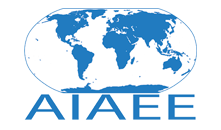Prospects and Evaluation of an Integrated Extension Model designed for Anthrax-free Area Development
Keywords
anthrax, One Health, awareness, Integrated Extension Model, community.
Abstract
The main purpose of this study wasto assess and evaluate anIntegrated Extension Modelto improve the overall knowledge, attitude and practice habits of community people over a sustained period.The survey questionnaire results have indicated that the various sources of anthrax message dissemination had played a significant role in the study. Among those responsible for disseminating the information, it was realized that studentsserving in the role of message disseminators played the most significant role (15%) indelivering the anthrax-related key information to the community. Majority community members (97.5%) were made aware of the nature, occurrence, public health importance, and management of the disease. Theirdangerous habits and attitudes toward slaughtering of sick animals were reduced (<30%). The attention of local administration and the law enforcement agency focused distinctively on the issue of animal slaughter. Vaccination and clinical records reveal that the percentage of vaccination coverage was increased from 40% to 85% andthe percentage of farmers who can diagnose anthrax has been increased from 30% to 40%.On the other hand, their poor economic background together with the dispersed settlement nature of the farmers was the main gaps identified that continued to force them to slaughter infected animals, sell their products and to consequently concealthat information, all issues that are required to be addressed in the future. Based on the research findings, it can be concluded that this modelis an efficient, effective and suitable method to raise awareness levels in a large communitywith regards to a zoonotic disease like anthrax.
Recommended Citation
Sarker, S. A.,
Samin, A. K.,
Mahmud, M.,
Hoque, N.,
Islam, S. S.,
Sarker, M. A.,
Rahman, B.,
&
Nazir, N. H.
(2020).
Prospects and Evaluation of an Integrated Extension Model designed for Anthrax-free Area Development.
Journal of International Agricultural and Extension Education, 27(3), 103-115.
DOI: https://doi.org/10.5191/iaee.2020.273103



